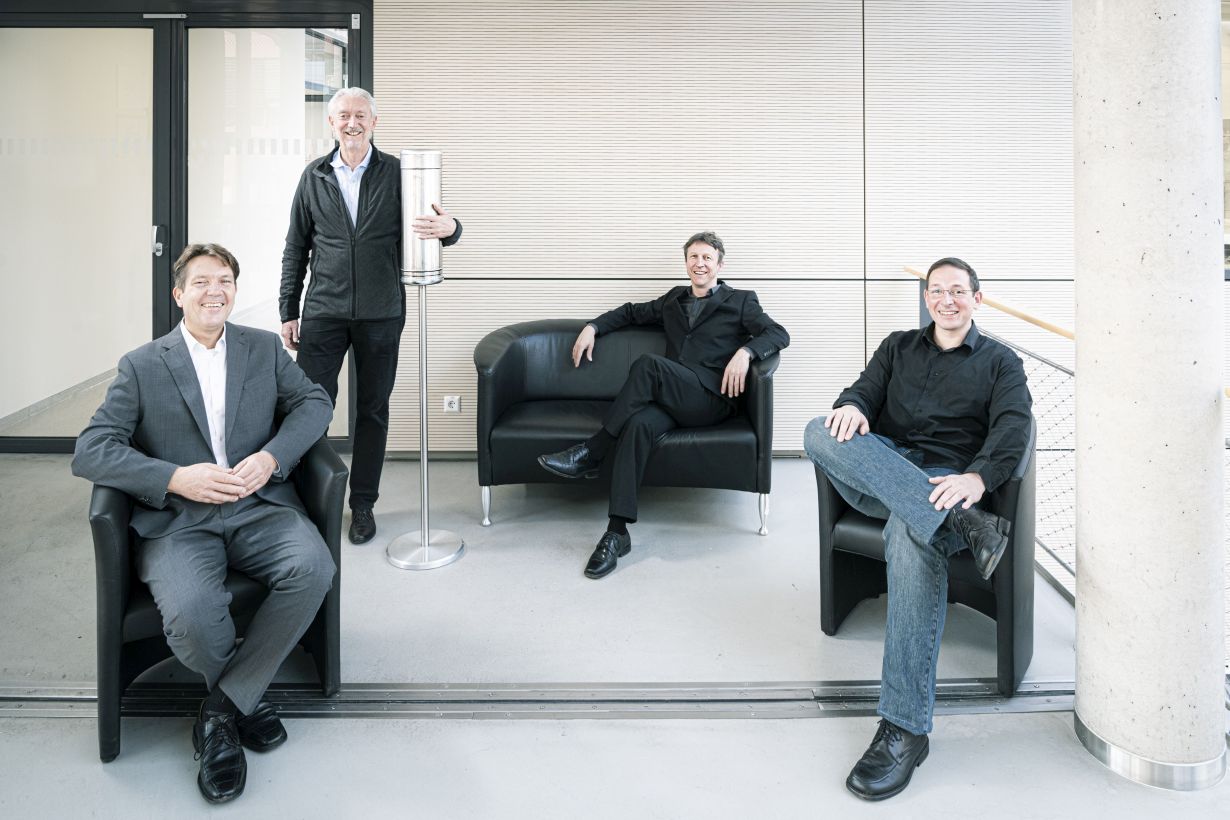Aerosols play an important role in the spreading of Covid 19. When breathing, speaking, or coughing, these small droplets loaded with Corona viruses disperse in indoor air. Schools, kindergartens, lecture halls of universities, medical practices, or restaurants are particularly affected. Scientists of Karlsruhe Institute of Technology (KIT) have now developed an effective, safe, and quickly available solution. Aerobuster is a simple, compact device that effectively inactivates viruses and other pathogens in room air.
Aerosols and the viruses they carry disperse in rooms very quickly and float in the air for hours. If they are inhaled by humans, these may be infected easily by the Corona virus. “First results reveal that nearly 100 percent of airborne model viruses can be inactivated by our Aer-obuster. Thanks to its high air flow rate, Aerobuster is highly powerful, but available at far lower costs than conventional air cleaning systems,” says Professor Horst Hahn, Head of KIT’s Institute of Nanotechnology and one of the inventors of Aerobuster. Simulations of aerosol movements in an average classroom with 20 pupils confirm that Aerobuster drastically reduces the concentration of active viruses in room air and, hence, largely decreases the risk of infection.
Flexible Use and Simple Design
“Of course, this also applies to all other highly crowded public areas, such as hospitals, residential and nursing homes, restaurants, offices, factory halls, or public transport means and their waiting areas,” Hahn says. Aerobuster can be used at all these locations, as the device has about the size of a floor lamp, is light, and may be fixed to a post, the ceiling, or the wall. ”The system consists of a simple metal tube, a fan of the type used for cooling PCs, a heating module, and a radiator that emits ultraviolet light of a certain wavelength,” the expert says. “With the help of the fan, air is sucked in via the tube. Then, the aerosols are dried and the viruses are inactivated using UV-C radiation – a long-established disinfection method,” explains Dr. Jochen Kriegseis from the Institute of Fluid Mechanics. “The waste heat can be used for heating the rooms,” adds Dr. Thomas Blank from the Institute for Data Processing and Electronics. The three inventors of the system agree that Aerobuster is an investment in the future, as it may also be used to fight future pandemics or the annual wave of influenza.

The inexpensive Aerobuster has about the size of a floor lamp and effectively removes Corona viruses. (Photo: Kira Heid, KIT)
Quickly Available in Large Numbers
In the next step, Hahn and his colleagues from other institutes of KIT plan to build 100 prototypes and to further test and optimize them on site. “With a suitable industry partner, ten thousand devices can be produced within a few weeks,” Hahn thinks and hopes for political interest and tailwind. The procurement costs for the materials from which the Aerobuster is composed are estimated by the experts at about 50 Euro.
Project Partners
These six institutes of KIT were involved in the scientific studies and technical optimization of Aerobuster: Institute of Nanotechnology, Institute for Data Processing and Electronics, Institute of Fluid Mechanics, Institute for Thermal Energy Technology and Safety, Institute of Meteorology and Climate Research, and Institute of Functional Interfaces.
In close partnership with society, KIT develops solutions for urgent challenges – from climate change, energy transition and sustainable use of natural resources to artificial intelligence, sovereignty and an aging population. As The University in the Helmholtz Association, KIT unites scientific excellence from insight to application-driven research under one roof – and is thus in a unique position to drive this transformation. As a University of Excellence, KIT offers its more than 10,000 employees and 22,800 students outstanding opportunities to shape a sustainable and resilient future. KIT – Science for Impact.

